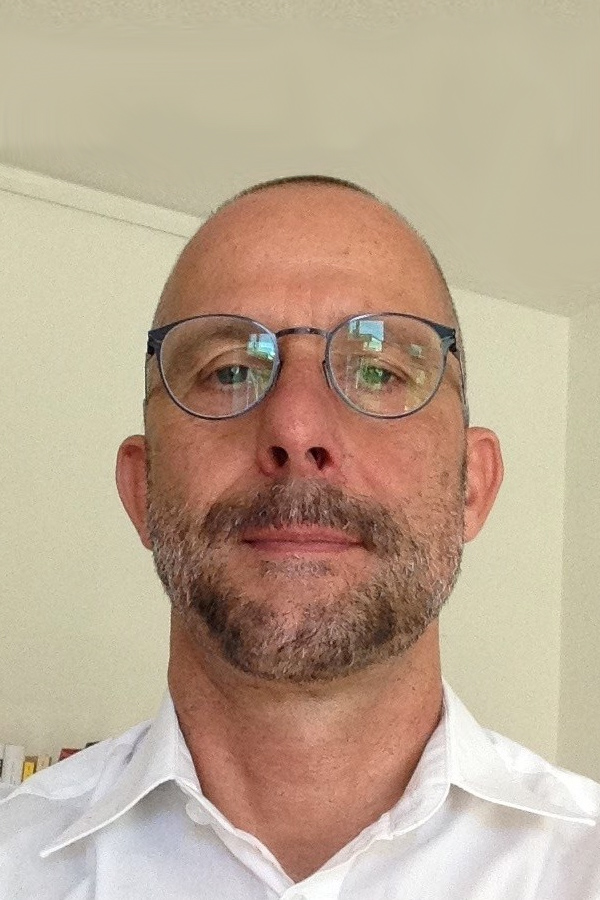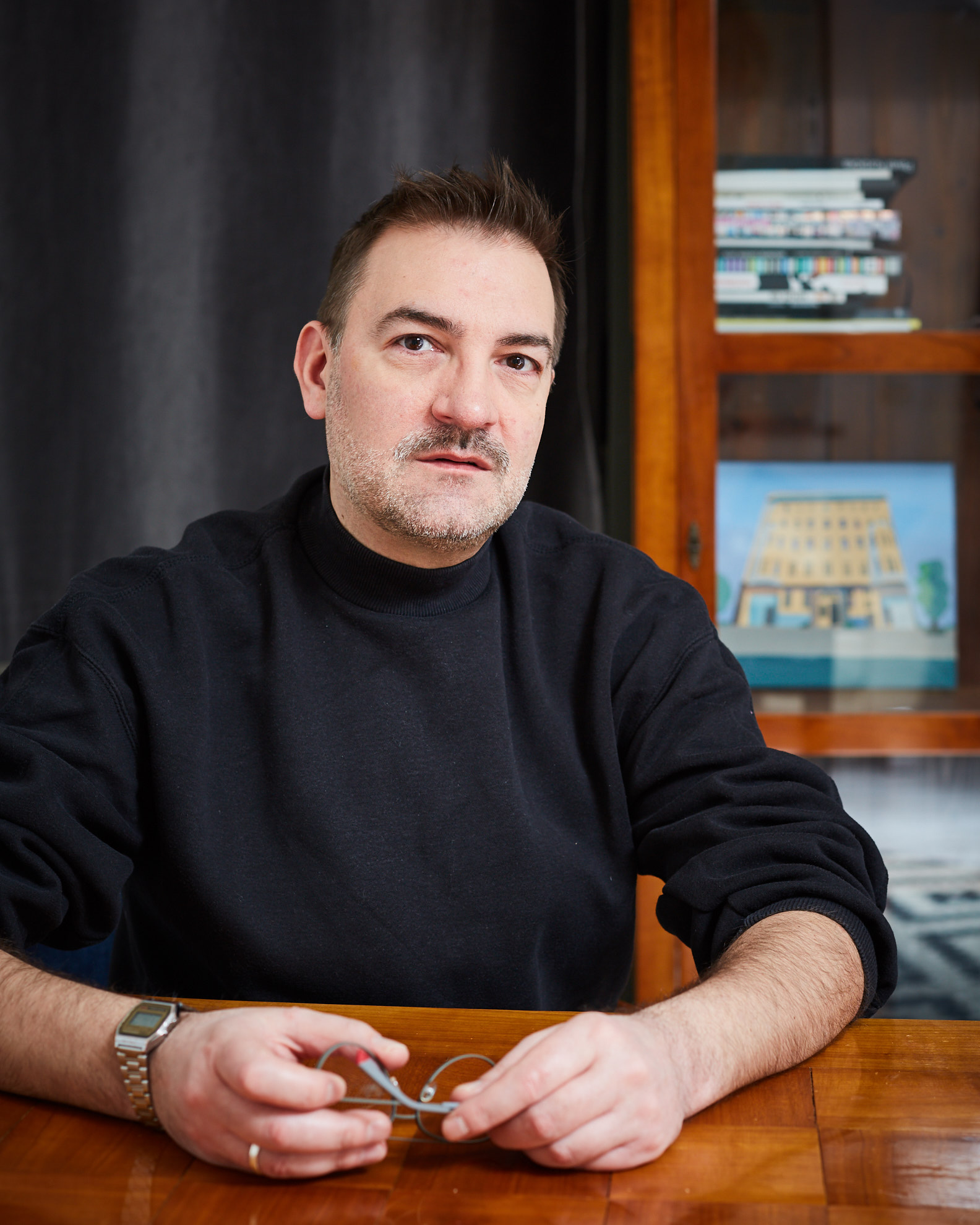Conversation with Boris Kostadinov
Sven Spieker: Please outline your view of the curator in the 21st century. What are this curator’s major commitments and constraints? Also does the “curator-from-Eastern Europe” concept retain any specificity for you, or not?
Boris Kostadinov: The war that’s raging in Ukraine right now is showing us beyond any doubt that we live in a fluid world, a world in which definitions—not only of what is meant by art, historical time, as well as culture, political and economic geography—are bound to be thoroughly rethought and redefined. The 21st century is no longer what it was until yesterday—basking in the false calm of the insuperable Western democracy. After so many years we are now seeing that the process which has been defining Eastern Europe culturally, and which started with the fall of the Berlin Wall, has reached its end. Now we will have to recognize that we were wrong about certain things, that we failed to understand others…
Every day we see Ukrainian cities being bombarded and Ukrainian mothers and their children fleeing. At the same time, the art world is getting ready for the opening of the 59th Venice Biennale under the title “The Milk of Dreams.” These two facts clearly do not go together well; they are not directly related, but they make us feel uncomfortable and ill at ease. Yet instead of making us feel helpless and guilty, they should push us to reconsider the models that have been reigning in the art world until now. How much of what we have accepted as “professional standards of the contemporary” is in fact “contemporary”? To what degree can these standards operate in a time of geopolitical clashes that are overturning the set of civilisational paradigms that we have been using to look at art until now? Rethinking the role that curators play should be an important part of this redefinition.
The understanding of what a curator is varies because of the incessant switching between “vocation” and “profession.” This is due to curatorial practices’ dependence on the dynamics of the art field, but even more so because of its dependence on societal processes and art economics.
SS: Can you tell me more about this distinction between curating as “vocation” and “profession”?
BK: The “professional” type—defined by the fetishization of the art object, the care it receives, and its preservation and cataloguing—comes into play when something has become evident and recognised as art; it is also the time when the respective work of art is placed in a research context. For example, our current understanding of “Eastern-European art” is based on that art’s place in the context of the historical events between 1989 (the fall of the Berlin Wall) and 1999 (NATO’s bombing of Yugoslavia). Here, curators act as “professionals” by offering their expertise as guardians, researchers, and interpreters of art in this specific historical context.
And then when is curating a “vocation”? This process—whose practices are the exact opposite of those of the “professional”—manifests itself in the construction and deconstruction of concepts, as defined by Roland Barthes when he wrote that “the mythical charge attributed to images is created through a process of first de-historicising them and then intentionally charging them with specific meanings”.(Roland Barthes Mythologies, Paris: Éditions de Seuil, 1957)
This “creation of meanings”, which as such stays outside the frame of history, is linked to the curator’s presumed magical quality as a manipulator, mediator, and powerful creator of communities. Contemporary curators tend to turn to this kind of activity, defining their practice outside of history and instead giving absolute priority to politics. Examples here are both the war in Ukraine and the Covid-19 pandemic, and the efforts by curators to explain and recount these events by using narratives that are political, but not necessarily historical.
Exhibitions are a battlefield where artistic and institutional practices clash. Institutions, pursuing their own cultural policies, invite curators to work with them who then realize projects based on critical positions towards this or that policy of the inviting institution. Yet this applies mainly to the Western context. The “global curator” concept has in fact been abandoned. Curators working in Berlin, New York, or London, and their colleagues in Moscow, Dubai, or Shanghai exhibit radical differences due to the differing societal standards, political restrictions, or the amounts and nature of political correctness and political responsibility that their respective societies impose.
SS: What about Eastern Europe in this context?
BK: We first need to distinguish between the terms “curator from Eastern Europe” and “Eastern European curator.” These vary significantly.
The first group (“curator from Eastern Europe”), to which I belong, consists of curators who come from, and have been educated, partly or entirely, in an Eastern-European country. They work in an international (mostly Western) context and have assimilated and adapted “non-Eastern” patterns of work, maintaining their connections with the geography they come from. Yet they largely use their international networks, working most of the time in a non-Eastern European context.
The curators in the second group belong to and work in Eastern Europe, often in a single country. In this case, migrating physically and culturally plays no role.
There are big, clearly visible differences between these two groups. But if we want to quickly and generally understand what an Eastern-European curator is, we need to start from the classic definition of the curator, placing his or her activities in an institutional context. The difference consists in the fact that institutions in Eastern Europe have less significance and less influence than those in the West. There is still a shortage of museums that operate the way they should; specialised university education is mostly problematic; public galleries and art funding, as well as specialised media, have far less influence and authority; and the art market’s influence is insignificant.
This is why Eastern European curators work mostly outside of the institutions. On the one hand, this gives them what they believe is freedom; on the other hand, it robs them of opportunities to work in an environment of clear-cut professional standards. Of course, Eastern Europe is not a homogenous whole. However, these days, art scenes such as those in Poland and Hungary, which have raised hopes in the past, are not at all inspiring because of the political pressures exerted on these societies.
Compared with the well-structured art scenes in Slovenia or the Baltic states, the problems in South-Eastern Europe are different. For example, there is no discernible censorship there, but this is due to the fact that in those countries, art has been pushed to the periphery of public debate and has no influence on the political and economic environments. Eastern Europe has been on the fringes of the global art world for a long time now, and it’s a fact that further deepens the institutional and professional blank spaces in this part of the continent.
SS: Many of your shows respond to key moments in recent history, especially the events of 1989; the financial crisis of 2007; the refugee wave of 2015; and the Covid-19 pandemic. How important are such “landmark events” to you?
BK: We started with Putin’s invasion of Ukraine, and that is the most recent segment of a traumatic arc that has influenced, in one degree or another, the ideas and the professional development of the artists of my generation. The events you mention are definitely significant for the formation of artists and curators like myself who started their careers at the end of 1990s, both as private citizens and as members of their respective societies.

Mature and Angry (2015). Center for Contemporary Art, Plovdiv. Image courtesy of Daniela Kostova, New Role Models (2015). Inkjet print on canvas and vinyl print on plexiglas), dimensions variable.
The members of my generation started their lives during the Cold War, and without having any utopias. Only after the fall of the Iron Curtain do their utopias appear. I spoke of this utopian pathos in my 2005 exhibition Central—New Art From New Europe at Ernst Hilger Gallery in Vienna, and you can find the same conclusions in my project Mature and Angry for the Centre for Contemporary Art in Plovdiv, Bulgaria, a project born in the wake of the 2007 world financial crisis, which marked the end of my generation’s belief in utopias.
It was at this point that I developed the Tweet Kim Il-sung project for the IG Bildende Kunst, Vienna, which explores the protests against the EU’s restrictions against Greece’s financial policies (2010), the financial system (Occupy Wall Street, 2011) and corruption (the protests in Bulgaria in 2013).
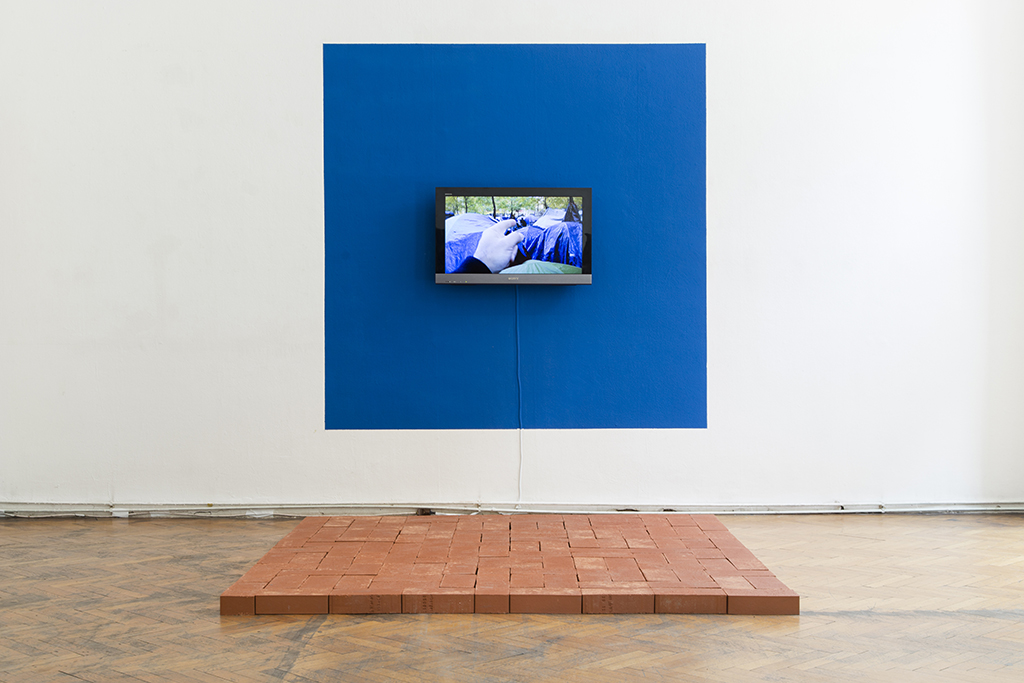
Tweet Kim il_sung, 2013. IG Bildende Kunst, Vienna. Image: courtesy of Ahmet Öğüt, Oscar William Sam, 2012, single channel full HD video, 4 min.
Then came the Middle Eastern refugee crisis, which caused our generation to start pondering the limits of tolerance, including discrimination and racism, as well as our attitude towards populist political parties in Eastern Europe. All this resulted in the large-scale international project Migrations of Fear (2017) that I curated with Ilina Koralova for Forum Stadtpark in Graz, Austria; the Centre for Contemporary Art, Plovdiv, Bulgaria; and the Koroska Gallery, Slovenj Gradec, Slovenia.
In less than three years of pandemic, we have entered willy-nilly into a new era. Artists have been compelled to switch, in the shortest time, to the virtual realm, thinking about its potential, the changes it brought to the art market, the new ethics implicit in the new aesthetic, and so on. But most important was the fact that a new, humanistic foundation had to be laid for creating art, based on what I call “digital anthropocentrism” in the concept of the online show Between Beasts and Angels. The cultural coup of the Renaissance in the 15th and the 16th-century centered on the concepts of man by juxtaposing them with God’s hierarchy. In the 21st century, the meaning of cultural processes is exceedingly similar, yet today, making sense of what is human takes place by comparing it with the ultimate universe of the technological.
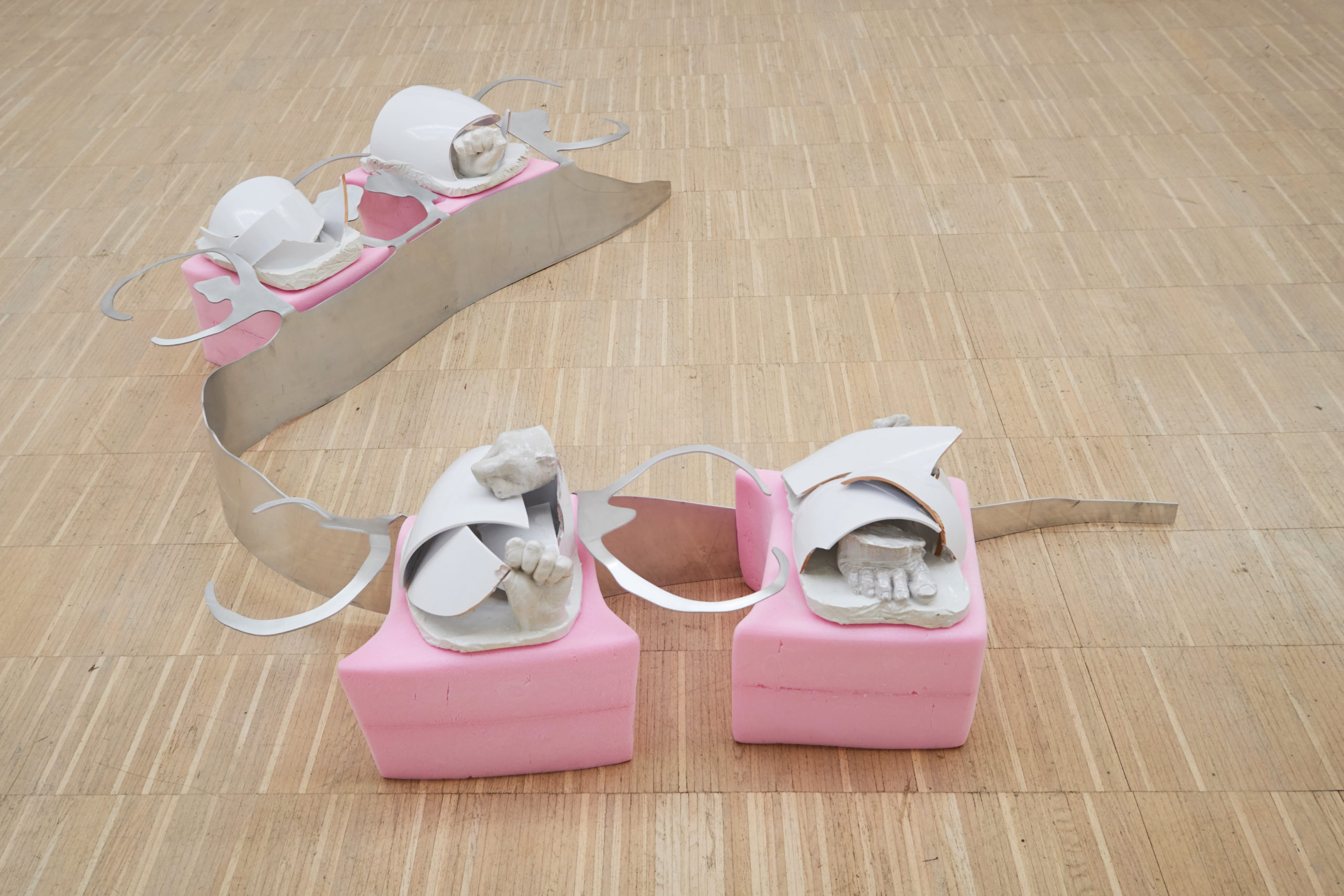
Migrations of Fear, 2017. Forum Stadtpark, Graz, Center for Contemporary Art, Plovdiv and KGLU, Slovenj Gradec (co-curator: Ilina Koralova). Image: courtesy of Luiza Margan, Prosthesis, 2017, aluminum, plaster, resin, styrophoam.
The war in Ukraine—a real career changer for artists of my generation–cannot be explained with reference to the utopia of digital anthropocentrism. Instead, it takes us back to the Cold War and the disintegration of the former Yugoslavia. The concept of progress and humanism is being unceremoniously destroyed and replaced by an inexorable historical cycle. The reevaluation of what is morally admissible, politically correct, or socially acceptable is part of a traumatic jigsaw puzzle that the artists and curators of my generation have to solve.
SS: You have strong institutional links with Austria, and have curated several shows of Austrian art. Please tell me about your 2016 show Errors of Beauty: Contemporary Austrian Art at the National Gallery in Sofia, and its inquiry in the idea of nationhood and art.
BK: The show tackles the idea of what is “Austrian” in terms of a universal language that is both generally understandable and international. The show asked the absurd question, “What does ‘national’ mean when applied to contemporary art?” In a period in which Western art practices are deconstructing, reformulating, globalising, watering down, even downright denying the existence of national borders, the understanding of what constitutes an artist’s “nationality” may at first glance seem odd. But if we take a look at the trends of the big international biennials and their unwritten quotas for geographic and minority representations of the invited artists, then the subject of the artist’s nationality acquires a completely new political meaning, suggesting that national or geographical minorities are important in the composition of a large international show today.
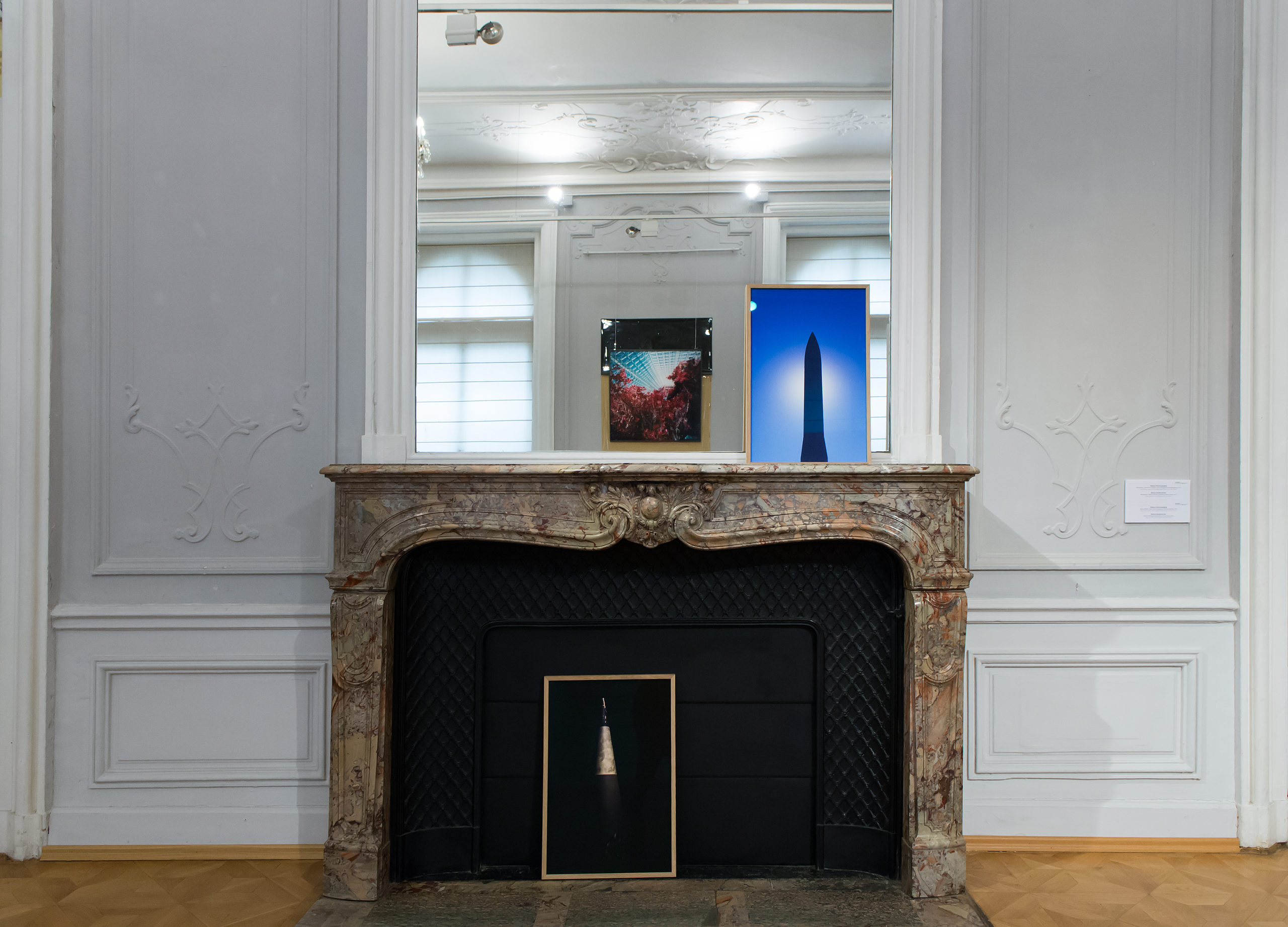
Errors of Beauty, 2016. National Art Gallery, Sofia. Image: courtesy of Markus Krottendorfer, Minuteman I, Ballistic Missile, Vandenberg Airforce Base, 2013, inkjet print from color Ektachrome, 58 x 38 cm.
SS: You currently operate mainly from Berlin, where you also have an institutional affiliation and where you develop the Scope BLN international artist residency program.(https://www.scopebln.org/) What difference would it make to be based in, say, Sofia?
BK: Both Scope BLN’s exhibition and artists-in-residence programmes are defined by three critical components: the international nature of our open calls, the collaborations in various directions (which derive from the scale of the Berlin and also the German art scene), and the intensive interaction with audiences.
I wouldn’t want my answer to sound as an outright negative assessment of the reality in Sofia; I have always enjoyed working there. But what I describe here as the essence of my work in Berlin would not be possible in the same way in Sofia.
A large-scale international program, for starters, would be difficult to realize there, mainly because of the limited attention Sofia receives as an art destination. There would possibly be opportunities for collaboration, but they would be limited, too, because of the small art scene and sometimes problematic professional practices.
My projects (in the West) are largely defined by their interaction with various audiences. The critical reception of the exhibitions that I have mounted in Bulgaria has been much more passive and amorphous. Despite the fact that the Bulgarian scene is today much more varied compared with the time when I used to live there, it remains local, provincial and rather encapsulated.
The reasons for this are identical to the ones I outlined above as defining the art scene in Eastern Europe: mostly a lack of adequate education, which results in poor professional standards and ends up in problematic practices at both public and private art institutions. All of this is the result of the absence of meaningful, purpose-oriented cultural policies that are based on clear priorities.
SS: You have recently curated an online show. How relevant is the digital medium for you as a curator?
BK: In the text for my exhibition Between Beasts and Angels (Radiator Gallery, New York; and Structura Gallery, Sofia) I tried to find an answer to the question of why the digital environment requires that our interaction with art be revolutionized. I put forward four characteristics that I find especially important:
First, the art world has become much more fluid and multifaceted. The conservative and pretentious system of quality assessment that large institutions tended to impose on contemporary art is no longer the sole criterion of who can exhibit art, when, and where. Second, many artists have been creating free content for years, ensuring internet traffic to giant social media platforms. They can now receive legally based compensation for their work.
Third, a considerable group of collectors has emerged who had never bought art from a physical gallery or at an art fair. We are today witnessing a seismic shift in how art is consumed. Fourth, NFT’s have introduced the innovative concept that the value of a piece of the visual arts can lie solely in its idea and concept, not in the physical material it is made of. In this sense, 20th century conceptual art, which strove to dematerialize the artwork in order to disable the the capitalist art market, has now been historically refuted in this ambition. Using NFTs, the post-industrial 21st century shows us that even if an art product does not exist physically, it can still sell, even on a global scale.
Digital art also defines a completely different understanding of what constitutes curating. Here the spectators’ interference is quite often an inherent part of the work of art. They turn to curators to a large extent with reference to the individual reaction and response that they are required to demonstrate in the presence of the digital work of art.
SS: You consistently evoke science as having a formative influence on your work. For example, with reference to your shows Mind the Gap I (2013, Radiator Gallery, New York) and Mind the Gap II (2015, Sturm & Schober Gallery, Vienna) you write that “for the concept of the exhibition I went with the idea that in our days we use the world without knowing its mechanism. As we use the computer without actually knowing how it works. Or take a sleeping pill without knowing its chemical composition.” Can you elaborate on this?
BK: Carolyn Christov-Bakargiev once said in an interview: “Artificial Intelligence (AI) is trendy in art. This kind of work shows how the art world misunderstands technology more than anything else.” She sees “AI” as “artificial stupidity”.(Naomi Rea, “Super-Curator Carolyn Christov-Bakargiev Talks About Hito Steyerl’s Latest Work and Why AI Is Actually ‘Artificial Stupidity”, Artnet November 26, 2018) Undoubtedly, such a view sounds rather extreme and stays within the realm of the classic liberal arts. Still, she is correct in her view that “[t]he conversation we should be having about AI concerns the historic relationship between technological change, culture, and humanity.”
My two Mind the Gap exhibitions (I and II) focused on the cultural and humanistic aspects of contemporary science. They did not feature works of technological art, or works based on collaboration with scientists. Rather, they were influenced by social linguistics and were based on artworks that translated the sophisticated language of scientific innovation into mass language, just as in the Middle Ages complicated religious postulates were translated into the language of the illiterate peasants through the visual arts.
Mind the Gap examines a classic dichotomy familiar from ancient times: “nature versus culture.” An advanced technological society is impossible without natural resources, and constantly strives to fix its broken relationship with nature by offering artificial “natural products” to the consumer.
SS: In the 1960s and ’70s, curatorship was often driven by pedagogical impulses. Do you still see value in such a proposition, which casts the curator as an educator in a broad sense?
BK: The idea of the curator as the ultimate mediator between art and public through his or her practices as an educator is much idealized. There are two facts that make me doubt that this idea is based on how things actually stand.
First, a curator’s economic and political position in society is not strong enough to be recognized as someone who transforms professional expertise into public knowledge. With the exception of specialised audiences, the general gallery- and museum-going public rarely seeks direct dialogue with curators. These audiences are rather attracted by how popular the artists featured in this or that exhibition are, and by the event’s media coverage. In other words, by museum management and marketing.
Second, 21st-century consumerism is contributing to the devaluation of the curatorial profession on a large scale. Today everyone can be a curator and everything can be curated. On a daily basis, social media show us curators of Instagram profiles, or curators of clothing, furniture, food, pets, travel and whatever else. This consumerist reception of curating has relocated curatorship firmly to the realm of action, and has denied it any place in the field of meaning.
SS: Please explain your working process, and specifically, your work with the artists you include in your shows. Is there a pattern or method? Or does each show come with its own working method developed as you move along, with the artworks in mind?
BK: To use the analogy with studio artist: I am not a studio curator. Each exhibition works to develop, comment on, materialize, or dematerialize, a certain context, and to this effect either engages certain concrete sets of facts, or creates its own. If this process fails to engage with the context or does not enter into a direct dialogue with it, no exhibition can come about. This is condition one. Condition number two is to have a good personal contact with the artists; in an exhibition project, communication is what I value the most. I am friends with many of the artists I work with, and while that is not necessarily a must, what is a must is that we maintain a dynamic form of communication—at least for as long as we are working together.
SS: Do you see a contradiction between contemporary art’s status as a commodity and its ambition to be politically effective?
BK: I like the concept behind Tania Bruguera’s Asociacion de Arte Útil, and I’d like to quote it here:
“It seemed to me that the ways through which art could achieve social transformation and political impact—as well as the ways in which political and social art was being discussed—had come to a dead end. I saw a difference between the expectations of people who were not involved in this type of art practice and of those who, like me, are practitioners of socially engaged art. I really wanted to rethink the role of the art institution in terms of political effectiveness. I kept encountering limitations while doing my work, but in the process, I found a great group of artists and artworks that had already been dealing with the same issues for a long time. I could identify them with what I called Arte Útil (useful art), because they went beyond complaining about social problems and instead tried to change them by implementing different solutions.”(BOMB 128, Summer 2014)
She then goes on to say that art’s core task today is to create “practical utopias.” Indeed, if we focus on putting forward utopias that lack ideas for how they might function in everyday life, art will not be recognised as a fundamental public activity. Of course, whether or not art is capable of acquiring tools that are powerful enough for changing society is a different question altogether.
The contemporary world is driven by the logic of consumerism, with its clearly defined and fixed parameters: price, demand, quantity, and quality. Art is the only exception. Bruguera also says that we are enchanted by the “miracle” of the work of art. Yet do we realize sufficiently that for at least 90% of art consumers, the “miracle” of art lies in the fact that it cannot be evaluated purely by applying a precise value determined by supply and demand? Does this fact make a work of art necessarily “revolutionary” or “innovative?” Can it be a guaranteed that art really has the ability to change the status quo just because of this?
In 2020, the global art market generated $50 billion in sales revenue, more or less Serbia’s GDP for the same year. The bulk of this amount was spent as an investment—in the acquisition of historical or contemporary works of art that will be locked away in private collections without in any way influencing the development of public life. That is why I am afraid that seeing art, as Bruguera does, as a “practical utopia” is at best an optimistic construct.
This conversation was conducted over email in March 2022.

